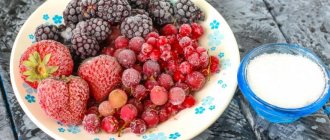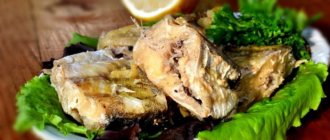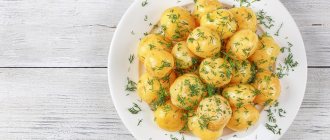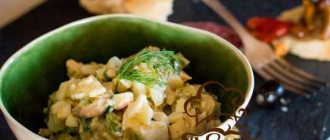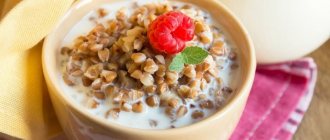Related Products
Chili soup (57 cal) Carrot coriander soup (100 cal) Vegetable soup (41 cal) Clear soup (8 cal) Chicken soup (60 cal) Potato soup (63 cal) Mushroom soup (51 cal) ) Tomato soup (43 cal) Bean soup (74 cal) Fish soup (16 cal) Turtle soup (53 cal) Onion soup (44 cal) Noodle soup (35 cal) Beef soup (50 cal) Pea Soup (67 cal) Vegetable Pasta Soup (44 cal) Broccoli Soup (60 cal) Homemade Soups (22 cal) Turkey Soup (38 cal) Cream Soups (52 kcal.) Meat soup (50 kcal.) Oyster stew soup (40 kcal.) Chinese soup (33 kcal.) Shark fin soup (46 kcal.) Cheese soup (76 kcal.)
Lentil soup recipe. Calorie, chemical composition and nutritional value.
Nutritional value and chemical composition of Lentil Soup.
The table shows the nutritional content (calories, proteins, fats, carbohydrates, vitamins and minerals) per 100 grams of edible portion.
| Nutrient | Quantity | Norm** | % of the norm in 100 g | % of the norm in 100 kcal | 100% normal |
| Calorie content | 63.6 kcal | 1684 kcal | 3.8% | 6% | 2648 g |
| Squirrels | 3.4 g | 76 g | 4.5% | 7.1% | 2235 g |
| Fats | 2 g | 56 g | 3.6% | 5.7% | 2800 g |
| Carbohydrates | 8 g | 219 g | 3.7% | 5.8% | 2738 g |
| Alimentary fiber | 0.3 g | 20 g | 1.5% | 2.4% | 6667 g |
| Water | 86.3 g | 2273 g | 3.8% | 6% | 2634 g |
| Ash | 0.669 g | ~ | |||
| Vitamins | |||||
| Vitamin A, RE | 55.9 mcg | 900 mcg | 6.2% | 9.7% | 1610 g |
| alpha carotene | 0.029 mcg | ~ | |||
| beta carotene | 0.336 mg | 5 mg | 6.7% | 10.5% | 1488 g |
| beta Cryptoxanthin | 0.023 mcg | ~ | |||
| Lycopene | 0.1 mcg | ~ | |||
| Lutein + Zeaxanthin | 0.292 mcg | ~ | |||
| Vitamin B1, thiamine | 0.006 mg | 1.5 mg | 0.4% | 0.6% | 25000 g |
| Vitamin B2, riboflavin | 0.006 mg | 1.8 mg | 0.3% | 0.5% | 30000 g |
| Vitamin B4, choline | 0.73 mg | 500 mg | 0.1% | 0.2% | 68493 g |
| Vitamin B5, pantothenic | 0.023 mg | 5 mg | 0.5% | 0.8% | 21739 g |
| Vitamin B6, pyridoxine | 0.024 mg | 2 mg | 1.2% | 1.9% | 8333 g |
| Vitamin B9, folates | 0.82 mcg | 400 mcg | 0.2% | 0.3% | 48780 g |
| Vitamin C, ascorbic acid | 6 mg | 90 mg | 6.7% | 10.5% | 1500 g |
| Vitamin E, alpha tocopherol, TE | 0.043 mg | 15 mg | 0.3% | 0.5% | 34884 g |
| Vitamin H, biotin | 0.049 mcg | 50 mcg | 0.1% | 0.2% | 102041 g |
| Vitamin K, phylloquinone | 0.9 mcg | 120 mcg | 0.8% | 1.3% | 13333 g |
| Vitamin RR, NE | 0.0879 mg | 20 mg | 0.4% | 0.6% | 22753 g |
| Niacin | 0.066 mg | ~ | |||
| Betaine | 0.004 mg | ~ | |||
| Macronutrients | |||||
| Potassium, K | 19.26 mg | 2500 mg | 0.8% | 1.3% | 12980 g |
| Calcium, Ca | 7.87 mg | 1000 mg | 0.8% | 1.3% | 12706 g |
| Silicon, Si | 1.25 mg | 30 mg | 4.2% | 6.6% | 2400 g |
| Magnesium, Mg | 3 mg | 400 mg | 0.8% | 1.3% | 13333 g |
| Sodium, Na | 200.73 mg | 1300 mg | 15.4% | 24.2% | 648 g |
| Sera, S | 4.34 mg | 1000 mg | 0.4% | 0.6% | 23041 g |
| Phosphorus, P | 5.1 mg | 800 mg | 0.6% | 0.9% | 15686 g |
| Chlorine, Cl | 306.76 mg | 2300 mg | 13.3% | 20.9% | 750 g |
| Microelements | |||||
| Aluminium, Al | 24.4 mcg | ~ | |||
| Bor, B | 12.9 mcg | ~ | |||
| Vanadium, V | 2.4 mcg | ~ | |||
| Iron, Fe | 0.117 mg | 18 mg | 0.7% | 1.1% | 15385 g |
| Yod, I | 0.32 mcg | 150 mcg | 0.2% | 0.3% | 46875 g |
| Cobalt, Co | 0.46 mcg | 10 mcg | 4.6% | 7.2% | 2174 g |
| Lithium, Li | 1.924 mcg | ~ | |||
| Manganese, Mn | 0.0309 mg | 2 mg | 1.5% | 2.4% | 6472 g |
| Copper, Cu | 19.32 mcg | 1000 mcg | 1.9% | 3% | 5176 g |
| Molybdenum, Mo | 1.222 mcg | 70 mcg | 1.7% | 2.7% | 5728 g |
| Nickel, Ni | 0.413 mcg | ~ | |||
| Rubidium, Rb | 18.9 mcg | ~ | |||
| Selenium, Se | 0.09 mcg | 55 mcg | 0.2% | 0.3% | 61111 g |
| Strontium, Sr | 0.21 mcg | ~ | |||
| Fluorine, F | 57 mcg | 4000 mcg | 1.4% | 2.2% | 7018 g |
| Chromium, Cr | 0.39 mcg | 50 mcg | 0.8% | 1.3% | 12821 g |
| Zinc, Zn | 0.078 mg | 12 mg | 0.7% | 1.1% | 15385 g |
| Digestible carbohydrates | |||||
| Starch and dextrins | 0.138 g | ~ | |||
| Mono- and disaccharides (sugars) | 0.7 g | max 100 g | |||
| Glucose (dextrose) | 0.199 g | ~ | |||
| Sucrose | 0.365 g | ~ | |||
| Fructose | 0.169 g | ~ | |||
| Essential amino acids | 0.032 g | ~ | |||
| Arginine* | 0.008 g | ~ | |||
| Valin | 0.004 g | ~ | |||
| Histidine* | 0.002 g | ~ | |||
| Isoleucine | 0.005 g | ~ | |||
| Leucine | 0.006 g | ~ | |||
| Lysine | 0.006 g | ~ | |||
| Methionine | 0.001 g | ~ | |||
| Methionine + Cysteine | 0.002 g | ~ | |||
| Threonine | 0.004 g | ~ | |||
| Tryptophan | 0.001 g | ~ | |||
| Phenylalanine | 0.005 g | ~ | |||
| Phenylalanine+Tyrosine | 0.007 g | ~ | |||
| Nonessential amino acids | 0.04 g | ~ | |||
| Alanin | 0.004 g | ~ | |||
| Aspartic acid | 0.007 g | ~ | |||
| Glycine | 0.003 g | ~ | |||
| Glutamic acid | 0.015 g | ~ | |||
| Proline | 0.003 g | ~ | |||
| Serin | 0.002 g | ~ | |||
| Tyrosine | 0.003 g | ~ | |||
| Cysteine | 0.001 g | ~ | |||
| Sterols (sterols) | |||||
| Phytosterols | 0.054 mg | ~ | |||
| Saturated fatty acids | |||||
| 14:0 Miristinovaya | 0.006 g | ~ | |||
| 16:0 Palmitinaya | 0.001 g | ~ | |||
| Monounsaturated fatty acids | 0.001 g | min 16.8 g | |||
| 18:1 Oleic (omega-9) | 0.001 g | ~ |
The energy value of Lentil soup is 63.6 kcal.
Primary Source: Created in the application by the user. Read more.
** This table shows the average levels of vitamins and minerals for an adult. If you want to know the norms taking into account your gender, age and other factors, then use the “My Healthy Diet” application.
Composition of nutrients, BJU
Lentil soup
| For quantity: 100 grams | ||
| Calories — 54 | Calories from fat - 10 | |
| BJU | ||
| Total fat content | 1.09g | |
| Saturated | 0.22g | |
| Polyunsaturated | 0.13g | |
| Monounsaturated | 0.52g | |
| Cholesterol | 2mg | |
| Total carbohydrate content | 8.83g | |
| Dietary fiber | 2.9g | |
| Sugar | 2.6g | |
| Squirrels | 3.32g | |
| Vitamins and microelements | ||
| A - 7 µg | C - 0.85 mg | |
| B-6 - 0.09 mg | B-12 – 0.12µg | |
| D - 0mcg | E - 0mg | |
| Calcium 20 µg | Iron 1.04 mg | |
| Magnesium 9mg | Zinc 0.3mg | |
| Potassium 144 mg | Sodium 332 mg | |
Distribution of calories for BJU:Carbohydrates (58%) Fats (18%) Proteins (24%) | ||
Dietary lentil soup for weight loss: recipe for lentil first course
Lentils are a healthy natural product from which a variety of dietary dishes are prepared. Soup is the most popular of them. An easy-to-prepare dietary lentil soup, the recipes for which come in different versions, is suitable for people on a diet. The dish is characterized by a balanced composition.
Benefits of lentil soup
This natural product is classified as a legume. Lentils are a rich source of vegetable protein necessary for the full functioning of the body.
There are several varieties, but brown, red, and green lentils are most often used in cooking. The red variety is used to prepare the soup. Brown lentils are suitable for making purees.
Dietary salads include a green variety of product.
Delicious soup is included in most diets, as it has a wide range of beneficial properties:
- The main ingredient of the dish is rich in B vitamins, vitamin C. It also contains large amounts of macro- and microelements: copper, phosphorus, magnesium, iron and potassium.
- A variety of vegetables are used in the preparation of cream soup, enriching the dish with fiber.
- The benefits of the dish are obvious for people who not only lose weight, but also build muscle mass. Legumes are enriched with vegetable protein, which muscle fibers need. Also, consuming the product helps increase physical endurance.
- Regular consumption has a positive effect on the cardiovascular system, immunity, skin and gastrointestinal tract.
The introduction of lean soups into the menu helps normalize the functioning of the intestines, preventing the occurrence of flatulence and constipation. Lentil dishes, due to their protein content, are filling, but at the same time easily absorbed by the body.
Is the dish suitable for weight loss?
Puree soup is useful for those losing weight, as the dish has a balanced composition, including fiber, macro- and microelements and vitamins. It also contains a small amount of calories. There are no saturated fats in the dish.
The introduction of lean soups into the menu helps normalize the functioning of the intestines, preventing the occurrence of flatulence and constipation. Lentil dishes, due to their protein content, are filling, but at the same time easily absorbed by the body. It is useful to serve soup for lunch, since in the morning and evening such a dish is less absorbed by the body and causes bloating.
Variants of popular recipes
You can prepare the soup using numerous step-by-step recipes, described in detail in the table:
| Dish | Ingredients | How to cook |
| Diet with celery |
|
|
| Meat |
|
|
| With zucchini |
|
|
| Tomato |
|
|
| Spicy for weight loss |
|
|
Contraindications
Despite the benefits, lentils and dishes made from them are not allowed for all people. Since this product is rich in protein, it is not recommended for use if you have gout or gallstones.
Lentils are legumes that cause gas in the intestines. Therefore, if a person has chronic intestinal diseases, they should avoid eating dishes made from this product.
How and which lentils to choose
To prepare dietary soups, choose brown and red lentils. These varieties cook well and when finished have a delicate consistency. It is better to choose green crops for making salads.
Purchase the product in a transparent container that allows you to visually assess the quality of the contents. Lentils should not contain foreign objects, mold or dirt. The product should not have any foreign odor. For cooking, it is optimal to buy first and highest grade lentils.
Main conclusions
- Lentils are a healthy product that is suitable for preparing dietary dishes, in particular soup.
- Brown and red varieties are the most suitable for making cream soup.
- The culture is rich in nutrients, including vegetable protein. It is useful for people who want to build muscle mass.
- The dish is included in a variety of diets.
- The soup can be prepared with vegetables, chicken, and spices. Often the dish is served as a smooth puree.
- People suffering from chronic intestinal diseases, gout, and cholelithiasis should not eat legume dishes.
- When choosing a product, carefully evaluate its external characteristics and smell. The best options are first and highest grade lentils.
How many times a week do you train?

